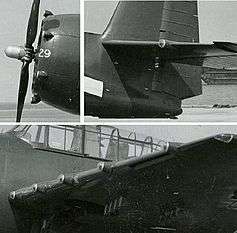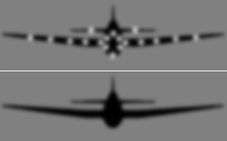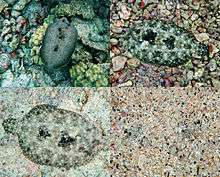Yehudi lights

Yehudi[lower-alpha 1] lights are lamps placed on the underside or wing leading edge of an aircraft to raise the aircraft's luminance to the average brightness of the sky, a form of active camouflage using counter-illumination. They were intended to disguise the aircraft by preventing it from appearing as a dark object against the sky.
The technology was developed by the US Navy from 1943 onwards, based on earlier research by the Royal Canadian Navy in its "diffused lighting camouflage" project. It did not come into operational usage and was considered obsolete with postwar advances in radar. With more recent improvements in stealth technology, Yehudi lights have again attracted interest.
Canadian origins
The use of Yehudi lights to camouflage aircraft by matching their luminance with the background sky was developed, in part, by the US Navy's Project Yehudi from 1943 onwards, following pioneering experiments in the Canadian "diffused lighting camouflage" project for ships early in the Second World War. The ships were fitted with ordinary projectors mounted on small platforms fixed to their sides, with the projectors pointing inwards at the ship's side. The brightness was adjusted to match the brightness of the sky. The Canadian experiment showed that such counter-illumination camouflage was possible, but the equipment was cumbersome and fragile, and the Royal Canadian Navy did not take it further, despite interest from their allies.[2]
US Navy research project
.jpg)
The key technology investigated under Yehudi was the fitting of lights to the undersides or fronts of antisubmarine and attack aircraft, since submarines at the surface could see the dark shape of an attacking aircraft against the night sky, and dive to safety.[3] British researchers found that the amount of electrical power required to camouflage an aircraft's underside in daylight was prohibitive; and externally mounted light projectors (following the Canadian approach) unacceptably disturbed the aircraft's aerodynamics.[2]
The American approach therefore used lamps mounted in the aircraft's nose and the leading edges of the wings.[3] It was trialled in B-24 Liberators, Avenger torpedo bombers and a Navy glide bomb from 1943 to 1945.[3] By directing the light forwards towards an observer (rather than towards the aircraft's skin), the system provided effective counter-illumination camouflage, more like that of marine animals such as the sparkling enope squid than the Canadian diffused lighting approach. However, the system never entered active service.[2]
Results

In 1945 a Grumman Avenger with Yehudi lights got within 3,000 yards (2,700 m) of a ship before being sighted, when under the same conditions an uncamouflaged plane was detected at a range of about 12 miles (19 km). It was noted at the time that this would force the enemy either to give up radar silence, making submarines easy to locate but harder to approach, or for observers to use binoculars continually. Since 8x binoculars at the time had a field of view of only 5 degrees, whereas enemy submarines at the surface kept watch with three observers each assigned a 120 degree arc, the camouflage was considered effective.[3]
The ability to approach a target unseen was rendered obsolete by advances in radar in the 1940s and 1950s. Since the development of stealth technology, Yehudi lights have attracted renewed interest.[4]
Notes
- ↑ The name may perhaps allude to the popular catchphrase and novelty song "Who's Yehudi", or "Who's Yehoodi". The catchphrase is said to have originated when violinist Yehudi Menuhin was a guest on the popular radio program of Bob Hope, where sidekick Jerry Colonna, apparently finding the name itself humorous, repeatedly asked "Who's Yehudi?" Colonna continued the gag on later shows even when Menuhin himself was not a guest, turning "Yehudi" into a widely understood late 1930s slang reference for a mysteriously absent person.[1]
References
- ↑ "Soundie - Who's Yehudi?" (Audio recording). Archive.org. 1942. Retrieved 10 June 2015.
- 1 2 3 4 Bush,, Vannevar; Conant, James; et al. (1946). "Camouflage of Sea-Search Aircraft" (PDF). Visibility Studies and Some Applications in the Field of Camouflage. Office of Scientific Research and Development, National Defence Research Committee. pp. 225–240. Retrieved February 12, 2013.
- ↑ Hambling, David (9 May 2008). "Cloak of Light Makes Drone Invisible?". Wired. Wired. Retrieved 23 July 2011.
External links
- Visibility Studies and Some Applications in the field of Camouflage (history of Yehudi lights project)
- Skunk Works Digest
